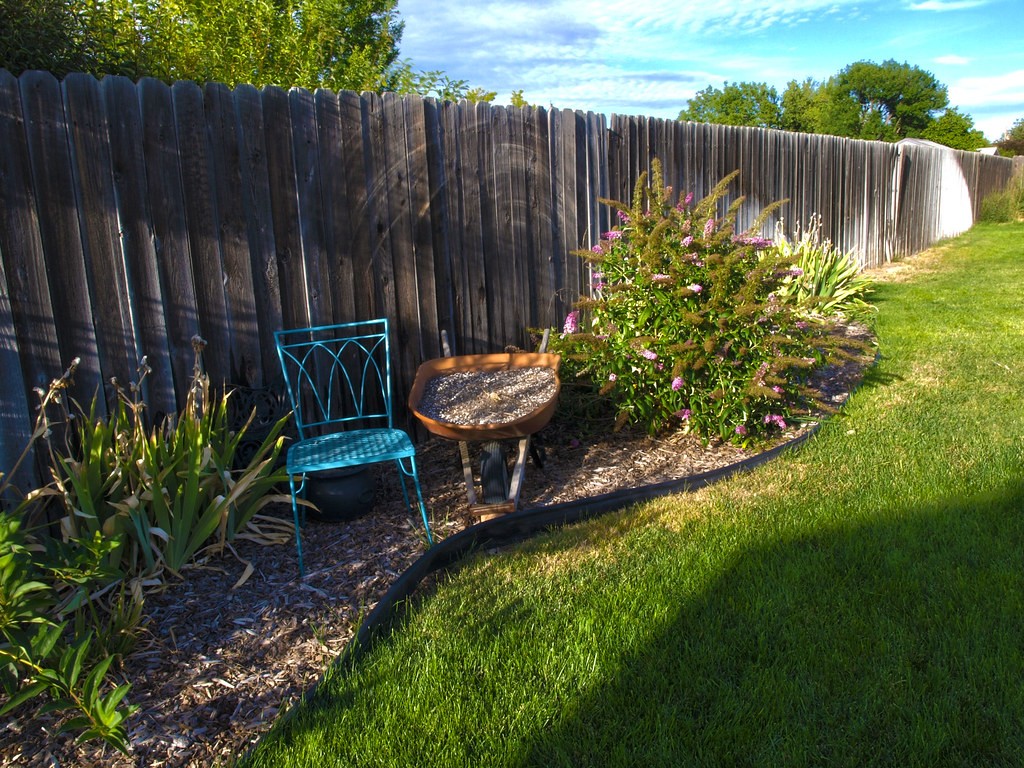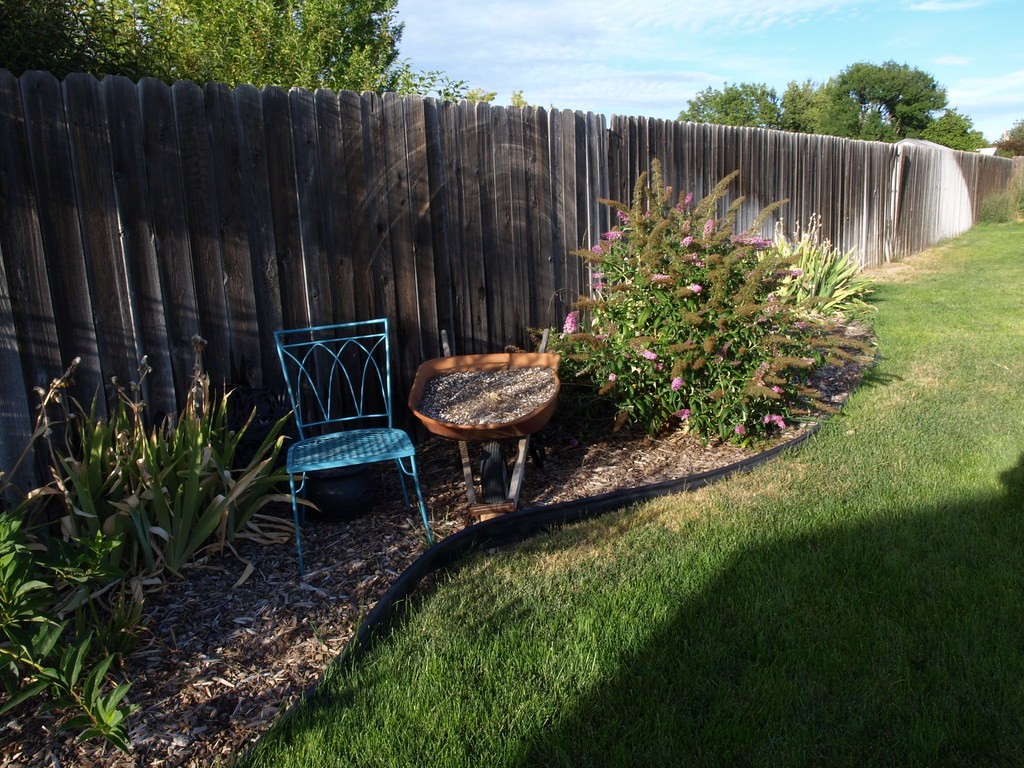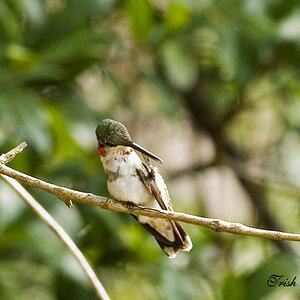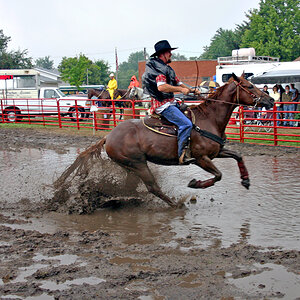Navigation
Install the app
How to install the app on iOS
Follow along with the video below to see how to install our site as a web app on your home screen.

Note: This feature currently requires accessing the site using the built-in Safari browser.
More options
You are using an out of date browser. It may not display this or other websites correctly.
You should upgrade or use an alternative browser.
You should upgrade or use an alternative browser.
Backyard HDR
- Thread starter IDLaxStar
- Start date
Provo
TPF Noob!
- Joined
- Oct 27, 2009
- Messages
- 934
- Reaction score
- 20
- Location
- Ex Member
- Can others edit my Photos
- Photos OK to edit
What is swirl markings on your fence? Seems like is light being reflected from one of those colored ball things for the garden that people like.
I also see some chromatic aberration on top corner of the fence where it means the tree line is not really as noticeable.
But well I am just pointing it out.

Now as for the image I like it, and you kept it realistic which is awesome.
I also see some chromatic aberration on top corner of the fence where it means the tree line is not really as noticeable.
But well I am just pointing it out.

Now as for the image I like it, and you kept it realistic which is awesome.
JG_Coleman
No longer a newbie, moving up!
- Joined
- May 30, 2010
- Messages
- 336
- Reaction score
- 28
- Location
- Wolcott, Connecticut, USA
- Website
- www.jgcoleman.com
- Can others edit my Photos
- Photos NOT OK to edit
Well, here's a couple things I've noticed...
Take a look at the background trees in the upper-right corner of the photo. Notice the fringing? There are two reasons this can happen. The first possibility is that it's just chromatic aberration.... that is, fringing produced by your optics along a high-contrast edge. But, assuming that any individual shot didn't produce aberrations like that, I think the more likely culprit is that the fringing is being caused by a tad bit of ghosting artifacts.
Ghost fringing in background trees is usually the result of taking your bracketed exposures when the breeze is blowing, even if only a bit. Inevitably, you wind up with a background tree that stubbornly refuses to seamlessly overlay with your other exposures. In one shot, the blue sky showed through... in another shot, the branches shifted and suddenly the sky showed through in a slightly different pattern. When you overlay three or more shots, each of which features that background tree in a slightly different way... you wind up with ghost fringing, where the border between the sky and the tree becomes hazy or distorted.
The movement of the garden plant in the foreground is the tip-off, of course. Your best bet... don't bother bracketing when the wind is blowing. It's extremely difficult to make a good HDR when the wind is moving your subject around... the edges will never line up properly.
Another thing I noticed is that your clouds are REEEALLY close to being blown out in this HDR. They may just barely be under the 'white ceiling', but in an HDR, one would expect it not to look so close to being overexposed. Next time you run your bracket, check your under-exposed shot and be absolutely sure that the clouds aren't blown out. If they are blown out, or close to being blown out, drop your neutral exposure to -1/3 EV or perhaps -2/3 EV and run the bracket again. This will bias your bracket a little towards the darker end of the spectrum in order to capture detail in the bright clouds.
Take a look at the background trees in the upper-right corner of the photo. Notice the fringing? There are two reasons this can happen. The first possibility is that it's just chromatic aberration.... that is, fringing produced by your optics along a high-contrast edge. But, assuming that any individual shot didn't produce aberrations like that, I think the more likely culprit is that the fringing is being caused by a tad bit of ghosting artifacts.
Ghost fringing in background trees is usually the result of taking your bracketed exposures when the breeze is blowing, even if only a bit. Inevitably, you wind up with a background tree that stubbornly refuses to seamlessly overlay with your other exposures. In one shot, the blue sky showed through... in another shot, the branches shifted and suddenly the sky showed through in a slightly different pattern. When you overlay three or more shots, each of which features that background tree in a slightly different way... you wind up with ghost fringing, where the border between the sky and the tree becomes hazy or distorted.
The movement of the garden plant in the foreground is the tip-off, of course. Your best bet... don't bother bracketing when the wind is blowing. It's extremely difficult to make a good HDR when the wind is moving your subject around... the edges will never line up properly.
Another thing I noticed is that your clouds are REEEALLY close to being blown out in this HDR. They may just barely be under the 'white ceiling', but in an HDR, one would expect it not to look so close to being overexposed. Next time you run your bracket, check your under-exposed shot and be absolutely sure that the clouds aren't blown out. If they are blown out, or close to being blown out, drop your neutral exposure to -1/3 EV or perhaps -2/3 EV and run the bracket again. This will bias your bracket a little towards the darker end of the spectrum in order to capture detail in the bright clouds.
Last edited:
IDLaxStar
TPF Noob!
- Joined
- Feb 28, 2010
- Messages
- 174
- Reaction score
- 0
- Location
- Idaho
- Can others edit my Photos
- Photos OK to edit
thanks for the help guys i will try this shot again tomorrow and try to correct everything you guys talked about. But how do you fix chromatic aberration? Or avoid it I should say.
JG_Coleman
No longer a newbie, moving up!
- Joined
- May 30, 2010
- Messages
- 336
- Reaction score
- 28
- Location
- Wolcott, Connecticut, USA
- Website
- www.jgcoleman.com
- Can others edit my Photos
- Photos NOT OK to edit
thanks for the help guys i will try this shot again tomorrow and try to correct everything you guys talked about. But how do you fix chromatic aberration? Or avoid it I should say.
I really don't think that the chromatic aberration (specifically "fringing") in your HDR is being caused by your optics... at least not for the most part. I really think it has more to do with the breeze and the fact that your exposures aren't lining up properly.
There are applications that can try to reduce fringing, but they don't work miracles...
My advice would be to try another shot... make sure the wind isn't blowing, keep your neutral bracket a bit on the under-exposed side, and let's see what you come up with.
From there, it'll be easier to tell what exactly is causing the fringing. Alternatively, you could post your neutral exposure from the bracket that created your first HDR. If the fringing isn't too bad in a single exposure, then the fringing in the HDR is primarily being generated by the HDR processing, not the lens itself.
Bynx
No longer a newbie, moving up!
- Joined
- Feb 8, 2008
- Messages
- 2,801
- Reaction score
- 365
- Location
- Just outside Toronto Canada
- Website
- www.photo.net
- Can others edit my Photos
- Photos OK to edit
thanks for the help guys i will try this shot again tomorrow and try to correct everything you guys talked about. But how do you fix chromatic aberration? Or avoid it I should say.
I really don't think that the chromatic aberration (specifically "fringing") in your HDR is being caused by your optics... at least not for the most part. I really think it has more to do with the breeze and the fact that your exposures aren't lining up properly.
There are applications that can try to reduce fringing, but they don't work miracles...
My advice would be to try another shot... make sure the wind isn't blowing, keep your neutral bracket a bit on the under-exposed side, and let's see what you come up with.
From there, it'll be easier to tell what exactly is causing the fringing. Alternatively, you could post your neutral exposure from the bracket that created your first HDR. If the fringing isn't too bad in a single exposure, then the fringing in the HDR is primarily being generated by the HDR processing, not the lens itself.
If you have Photoshop removing the purple fringing is very easy and takes less than a minute.
JG_Coleman
No longer a newbie, moving up!
- Joined
- May 30, 2010
- Messages
- 336
- Reaction score
- 28
- Location
- Wolcott, Connecticut, USA
- Website
- www.jgcoleman.com
- Can others edit my Photos
- Photos NOT OK to edit
thanks for the help guys i will try this shot again tomorrow and try to correct everything you guys talked about. But how do you fix chromatic aberration? Or avoid it I should say.
I really don't think that the chromatic aberration (specifically "fringing") in your HDR is being caused by your optics... at least not for the most part. I really think it has more to do with the breeze and the fact that your exposures aren't lining up properly.
There are applications that can try to reduce fringing, but they don't work miracles...
My advice would be to try another shot... make sure the wind isn't blowing, keep your neutral bracket a bit on the under-exposed side, and let's see what you come up with.
From there, it'll be easier to tell what exactly is causing the fringing. Alternatively, you could post your neutral exposure from the bracket that created your first HDR. If the fringing isn't too bad in a single exposure, then the fringing in the HDR is primarily being generated by the HDR processing, not the lens itself.
If you have Photoshop removing the purple fringing is very easy and takes less than a minute.
While this is true (I use the de-fringing slider of Lightroom occasionally), the results will be less than pleasing if, as I theorize, the fringing in his HDR is being introduced by the HDR processing and is not inherent to his optics.
If it is ghosting artifacts causing the bulk of the fringing, the de-fringing algorithm will remove the purple fringes, but will also leave unrealistic edges to the tree tops that will be devoid of detail.
Thus, before falling back on the de-fringing tool, he should give his HDR another shot with less wind and see if the same degree of fringing shows up. Wouldn't you agree, Bynx?
JG_Coleman
No longer a newbie, moving up!
- Joined
- May 30, 2010
- Messages
- 336
- Reaction score
- 28
- Location
- Wolcott, Connecticut, USA
- Website
- www.jgcoleman.com
- Can others edit my Photos
- Photos NOT OK to edit
Yeah... although there is a touch of fringing there even in your neutral shot, it is really nothing compared to what appeared in the HDR. Now, even more so than before, I think you'll have better results if you try to bracket your shots when the breeze isn't blowing.
Basically, the moving tree branches are changing the shape of the tree a little, teeny bit in each exposure. Since these edges don't line up properly in the HDR, you actually wound up with a 'fringe triple-threat'. The mild fringe falls in a slightly different place in each exposure, and when they are merged, you wind up with a fringe that is unusually thick.
Basically, the moving tree branches are changing the shape of the tree a little, teeny bit in each exposure. Since these edges don't line up properly in the HDR, you actually wound up with a 'fringe triple-threat'. The mild fringe falls in a slightly different place in each exposure, and when they are merged, you wind up with a fringe that is unusually thick.
Bynx
No longer a newbie, moving up!
- Joined
- Feb 8, 2008
- Messages
- 2,801
- Reaction score
- 365
- Location
- Just outside Toronto Canada
- Website
- www.photo.net
- Can others edit my Photos
- Photos OK to edit
In this shot there is no misalignment. There is lots of purple fringing in the trees to the right. Im not sure what that is on the fence to the left as pointed out. If you treat the purple look with Hue/Sauration it all goes away. Usually purple fringing is all the same color throughout. In this case there is blue fringing in the trees and purple fringing on the left side of some boards. Go to Hue/Saturation then click the MASTERS button. Then select the color you want to eliminate. You will see that color in the bottom of your toolbox. Slide the Saturation to the left until the fringing has gone neutral. Then as a final measure, using the Lighten/Darken and move the slider until the fringing matches its adjacent pixels.
JG_Coleman
No longer a newbie, moving up!
- Joined
- May 30, 2010
- Messages
- 336
- Reaction score
- 28
- Location
- Wolcott, Connecticut, USA
- Website
- www.jgcoleman.com
- Can others edit my Photos
- Photos NOT OK to edit
99% of the photograph can align perfectly... but if the branches on that one tree in the background moved in between his exposures, then it will be impossible for them to perfectly align.... even if everything else in the photo is aligned. All it would take is the shape of the tree changing by a pixel or two between each exposure for the one-pixel fringe to become a three-pixel fringe when the exposures are merged.
Anyhow... I guess we'll see what his re-shoot looks like.
Anyhow... I guess we'll see what his re-shoot looks like.
Bynx
No longer a newbie, moving up!
- Joined
- Feb 8, 2008
- Messages
- 2,801
- Reaction score
- 365
- Location
- Just outside Toronto Canada
- Website
- www.photo.net
- Can others edit my Photos
- Photos OK to edit
I wasnt really referring to the trees but rather to the fence. There is what looks like purple fringing on the left side of the dark brown wood against the green. Its a weird magenta color that doesnt seem to be right. In the neutral shot there is no bright blue fringing in the trees to the right. And looking at the trees on the left the parts that are against the sky show no movement at all. Every leaf is clearly defined.
Most reactions
-
 432
432 -
 282
282 -
 276
276 -
 262
262 -
 215
215 -
 183
183 -
 176
176 -
 171
171 -
 169
169 -
 167
167 -
 159
159 -
 128
128 -
 116
116 -
I
99
-
 94
94






![[No title]](/data/xfmg/thumbnail/42/42271-5db67ba3109fc5edfe486ca6046bcc96.jpg?1619740080)







